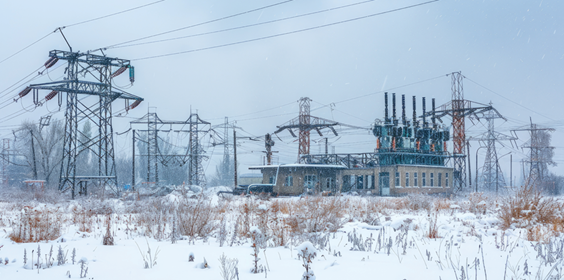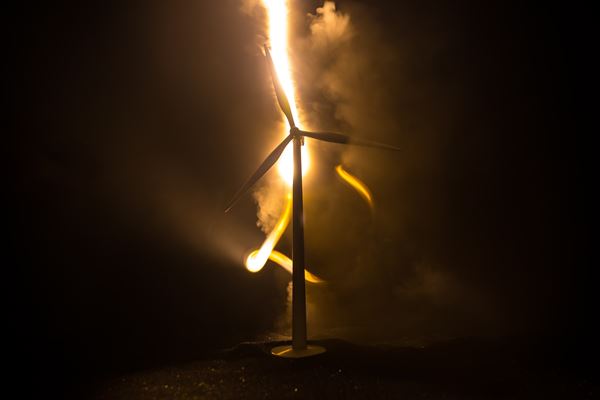Trouble Down the Line: Electricity Generation Transmission and Distribution

Introduction and Historical Context
In September 1882, the electrical age began. Thomas Edison’s Illuminating Company flipped the switch on his power station on Pearl Street in lower Manhattan, providing electricity to homes at a price comparable to gas. By the end of the month, they had 59 customers. By the next year, they had 513. Electricity was supplied at 110V DC (direct current).
But there was a problem. Direct current is not easily converted to higher or lower voltages. Tesla believed that alternating current (AC) was the solution to this problem, as alternating current could be converted to different voltages relatively easily using a transformer. Edison, not wanting to lose the royalties he was earning from his direct current patents, began a campaign to discredit alternating current.
He spread misinformation, saying that alternating current was more dangerous, even going so far as to publicly electrocute stray animals using alternating current to prove his point. The war of the currents ensued.
The Chicago World’s Fair took place in 1893, at the height of the “current war”. General Electric bid to electrify the fair using Edison’s direct current for $554K, but lost to George Westinghouse, who said he could power the fair for only $399K using Tesla’s alternating current.
That same year, the Niagara Falls Power Company decided to award Westinghouse (which had licensed Tesla’s polyphase AC induction motor patent) the contract to generate power from Niagara Falls. Although some doubted that the falls could power all of Buffalo, New York, Tesla was convinced it could power not only Buffalo, but also the entire Eastern United States.
In November 1896, Buffalo was lit up by the alternating current from Niagara Falls. By this time, General Electric had decided to jump on the alternating current train, too.
Challenges in Modern-Day Transmission Systems
The current U.S. power grid is ageing, and it needs an upgrade, especially as the power sector works to achieve 100% clean electricity by 2035. To meet the growing demand for electricity, especially from clean energy sources, the U.S. will need to expand its transmission capacity and invest in modernising the grid. In fact, reaching 100% clean electricity by 2035 could require anywhere from $330 billion to $740 billion in additional power system expenditures, according to a study by NREL.
Similarly, in the UK, National Grid’s Electricity System Operator estimates that Britain’s electricity needs will rise by nearly 65% by 2035 as heat and transport are increasingly electrified. To help inform the largest grid upgrade since the 1960s, a new report by the Institution of Engineering and Technology (IET) and engineering services company Mott MacDonald describes a wide range of options for getting more out of the existing transmission network and adding capacity to it.
Heathrow Substation Fire (UK) – March 2025
The final report by the National Energy System Operator (Neso) on the incident said the fire that cut power to the airport on 21 March, affecting more than 1,350 flights, almost 300,000 passengers and cutting power to 67,000 homes, was most likely sparked by moisture entering the insulation around wires.
“An elevated moisture reading … had been detected in oil samples taken in July 2018, but mitigating actions appropriate to its severity were not implemented,” the report said. “National Grid has since initiated an end-to-end review of its oil sampling process, with a view to ensuring that it is robust.”
A National Grid electricity transmission review in 2022 also indicated that fire suppression systems were inoperable, and a fire risk assessment in July 2024 stated that if a fire started in any of the three super grid transformers at the substation, it would not be suitably suppressed. The assessment resulted in the issuing of a high-priority action for fire systems to be appropriately serviced and maintained, but that action remained outstanding at the time of the incident, Neso said.
Neso said that using forensic analysis from National Grid and the London fire brigade, it had found evidence of a catastrophic failure on one of the transformer’s high-voltage bushings at the 57-year-old power substation that caused it to catch fire. Heathrow’s private electricity network took hours to power up again after the outage, even as two nearby substations continued to operate as normal. Europe’s largest airport took a further seven hours to reopen after the power was restored, according to the report, meaning flights were disrupted for almost 24 hours after the fire broke out.
So, the root cause of the Heathrow substation fire was most likely to have been an elevated moisture reading in the Dissolved Gas analysis (DGA), which wasn’t acted upon. The extent of the fire itself was further exacerbated by the inadequacy of the fire suppression systems.
Failure to act, misinterpretation or improper understanding of DGA results can result in catastrophic failure of equipment. Ensuring personnel are adequately trained on DGA principles, interpretation methods, and potential pitfalls is crucial. Employing a combination of DGA techniques (like key gas analysis, ratio methods, and graphical methods) can improve accuracy and reduce the risk of misinterpretation.
Texas Power Grid Failure – February 2021
The failure of the Texas power grid in February 2021 was one of the most severe energy crises in U.S. history, leaving millions without power for days in freezing temperatures. The roots of this disaster lie in this unique power grid and approach to energy regulation, with a legacy of deregulation going back to the 1990s (Krauss, 2021).
At that time, the state dismantled its centralised utility model in favour of a competitive, market-based system of private generators, transmission operators, and energy retailers (Krauss, 2021). The goal was to lower consumers’ costs and foster innovation; however, the system lacked financial incentives for maintenance, requirements for weatherproofing infrastructure, and effective oversight (Krauss, 2021).
These deficits left the system exposed to the catastrophic storm of 2021. The storm brought record-breaking cold and extreme weather conditions that overwhelmed the state’s power infrastructure.
As temperatures plummeted, demand for electricity surged while nearly half the grid’s generating capacity failed (Krauss, 2021). Wind turbines froze, natural gas pipelines and storage facilities were crippled, and power plants faltered (Krauss, 2021).
Over the course of just four hours on February 15th, 40% of the grid’s capacity went offline, forcing the Electric Reliability Council of Texas (ERCOT), the nonprofit managing the state’s grid, to implement rolling blackouts (Krauss, 2021). At the height of the catastrophe, over 52,000 megawatts of power capacity were offline, and 4.5 million homes and businesses lost power, with some outages lasting for days (Krauss, 2021). ERCOT later revealed that the grid was just 4 minutes and 37 seconds from a complete statewide blackout, which could have taken weeks to restore and had disastrous effects on grid infrastructure and equipment (Johnson, 2021).
The Texas grid failure was arguably a failure of policy and regulation rather than a technical issue. ERCOT, who operate the grid, is separate from the main US grid, limiting its access to resources during emergencies. Also, the deregulated energy market in Texas has been criticised for potentially prioritising short-term profits over grid resilience and investment in weatherization.
A significant portion of the power plants and infrastructure were not resilient enough to withstand extreme temperatures, contributing to the failure. While Texas is increasing its use of renewable energy, the transition presents ongoing challenges in ensuring grid stability and reliability.
The Iberian Blackout – April 2025
In April 2025, the Iberian Peninsula suffered a blackout that left both Spain and Portugal without electricity for half a day. In response, the two network operators carried out an exceptionally complex technical operation to restart their electricity systems in record time, managing to restore service to meet nearly 85% of expected demand by midnight.
The blackout triggered intense debate across media channels about its cause, with opinions deeply polarised. Some placed the blame on renewables, arguing that the operation of the Spanish grid was overwhelmed by too much variable renewable generation.
Others claimed that nuclear plants experiencing disconnections from the grid could be behind the oscillations detected before the blackout. While a cyberattack was initially suspected, investigations ruled it out, concluding that the outage stemmed from a series of technical and planning errors.
Somewhere in the middle of these opposing views was a range of technical partial explanations, each shaped by the corresponding expert’s own area of knowledge.
The real experts all agree on one point: the reaction of such a complex system cannot be understood simply by analysing the behaviour of one of its individual components.
In the context of the energy transition, the n-1 risk refers to the vulnerability of an energy system when a major component of its infrastructure fails or is unavailable. This is particularly relevant as the energy transition moves away from traditional, centralised fossil fuel-based systems towards more distributed and renewable energy sources.
The transition introduces new potential failure points and interdependencies, making the system potentially more susceptible to disruptions. Mitigating the n-1 risk is crucial for a successful energy transition.
Power Generation and Distribution Failure Investigations
The complexities and challenges faced by power generation and distribution systems, both historically and in modern-day infrastructure, highlight the critical need for expert analysis and investigation.
From the early days of the "current war" to the more recent grid failures like the Texas Power Grid disaster and the Heathrow substation fire, the consequences of overlooked issues can be far-reaching.
At Envista Forensics, we provide expert Power Generation and Distribution Failure Investigations, offering comprehensive forensic analysis to help identify the root causes of power system failures.
Our team of experts works with utilities, energy providers, and regulatory bodies to provide insight into electrical failures, improve safety protocols, and prevent future disasters.
Whether dealing with ageing infrastructure, modern challenges of integrating clean energy, or specific incidents like transformer failures or grid disruptions, Envista Forensics is equipped to provide the knowledge and solutions needed to safeguard your power systems.
Contact us today to learn more about how we can help ensure the reliability and safety of your electrical infrastructure.
References
1 The U.S. Utilities Decarbonization Index - Decarbonization Channel
2 100% Clean Electricity by 2035 Study | Energy Systems Analysis | NREL
Nuestros consultores están listos para ayudar.





